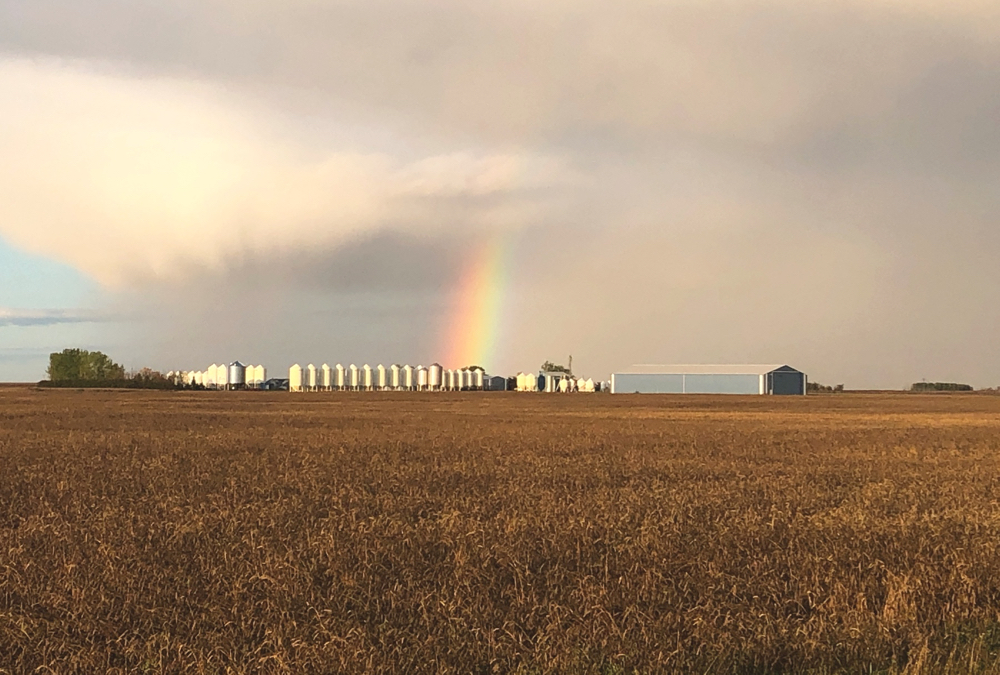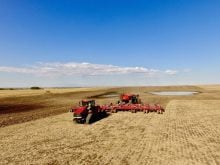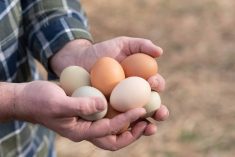When we put together the last issue of Grainews, I assumed our harvest (and everyone else’s) would be finished by the time we got to our October issue.
That is not how things have turned out.
Like many farmers across the Prairies, we’ve had weather challenges this season. It rains, we wait for the fields to dry up, it rains again. Repeat. We were lucky to get our lentils in the bin before the rain, but as you can see from the photo of the rainbow over our farm, we still have durum out in the field.
Read Also

Harvest wraps up and fall work begins
At the Eppich famly ranch in western Saskatchewan, the fall harvest was successful with few breakdowns, cows and calves have been sorted and a new tractor has arrived
It is a (small) comfort to know we’re not alone. My Twitter feed has been filled with photos of sprouting crops and (yikes) early snow. By September 23, only 39 per cent of the total Saskatchewan crop was harvested, well under the 10-year average of 63 per cent (from Saskatchewan’s Ministry of Agriculture Crop Report). Around Yorkton, only 15 per cent of the crop had been combined by the last week of September.
With harvest still unfinished, we’re cancelling events we’d pencilled into the calendar — things we thought we’d be able to do back in the spring when we were saying, “I’m sure we’ll be finished harvest by late September.” Now we’re working short spurts when the rain allows, wondering if there will be time for fall spraying.

Don’t forget us
Harvest issues, low-quality grains, low world prices due to trade issues — all of these things make farmers more passionate when they ask federal election candidates the critical question: “What are your plans for the ag sector?”
As usual, agriculture is getting little attention in the 2019 federal campaign. This is hardly surprising given how few rural ridings are seriously at play in this election, and how few urban Canadians understand ag policy as it impacts farmers. No party leader has much to gain by delving into the finer points of ways farmers could pay for seed breeding.
Dalhousie University’s Agri-Food Analytics Lab hired Angus Reid Global to survey Canadians about agriculture and the election. The Lab wasn’t surprised by the results. The report summary says: “We rarely see anything come out of an intensive national campaign, as other priorities tend to garner more attention.”
The survey report, released on September 9, found that 31 per cent of Canadians expected food and agriculture to be a key issue in the 2019 election. But this doesn’t necessarily mean they expected the people producing the food to be a key election issue.
When asked about agri-food priorities and told they could choose just one, 55 per cent of survey respondents said the agri-food issue they’re most concerned about is “food security and affordability.” This reflects a worry that not all families can afford nutritious food. This is an important issue, but food distribution and affordability problems have very little to do with the issues faced by grain and livestock producers at the farm level.
“Support for farmers” came in second place — only 12 per cent of respondents saw it as their priority in the agri-food area. “Making food safer” came in third, at 10 per cent.
It’s a little disappointing to realize how little attention agriculture is getting on the national stage, but it’s clear that most Canadians aren’t interested in the types of discussions farmers would like to have.















